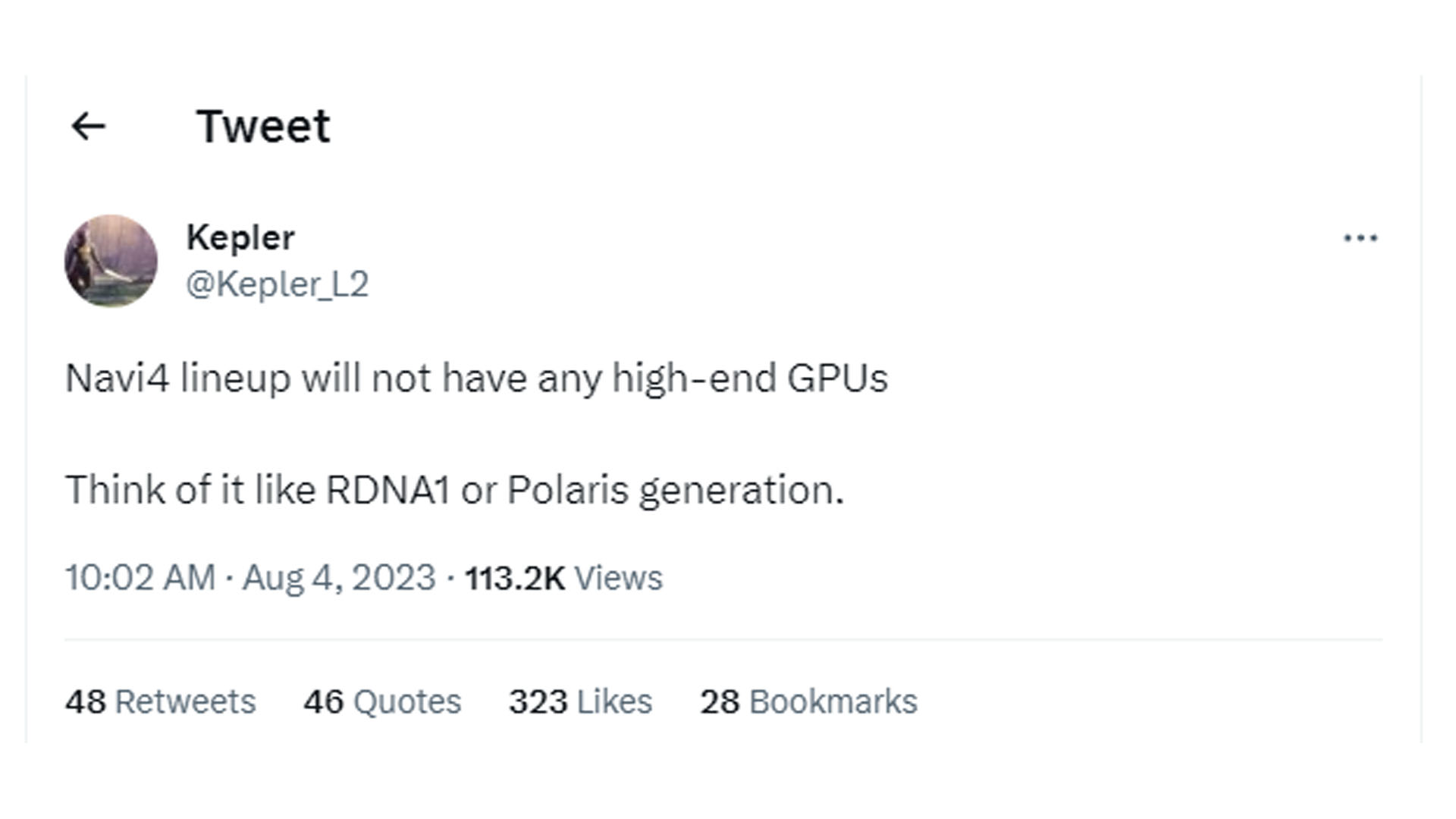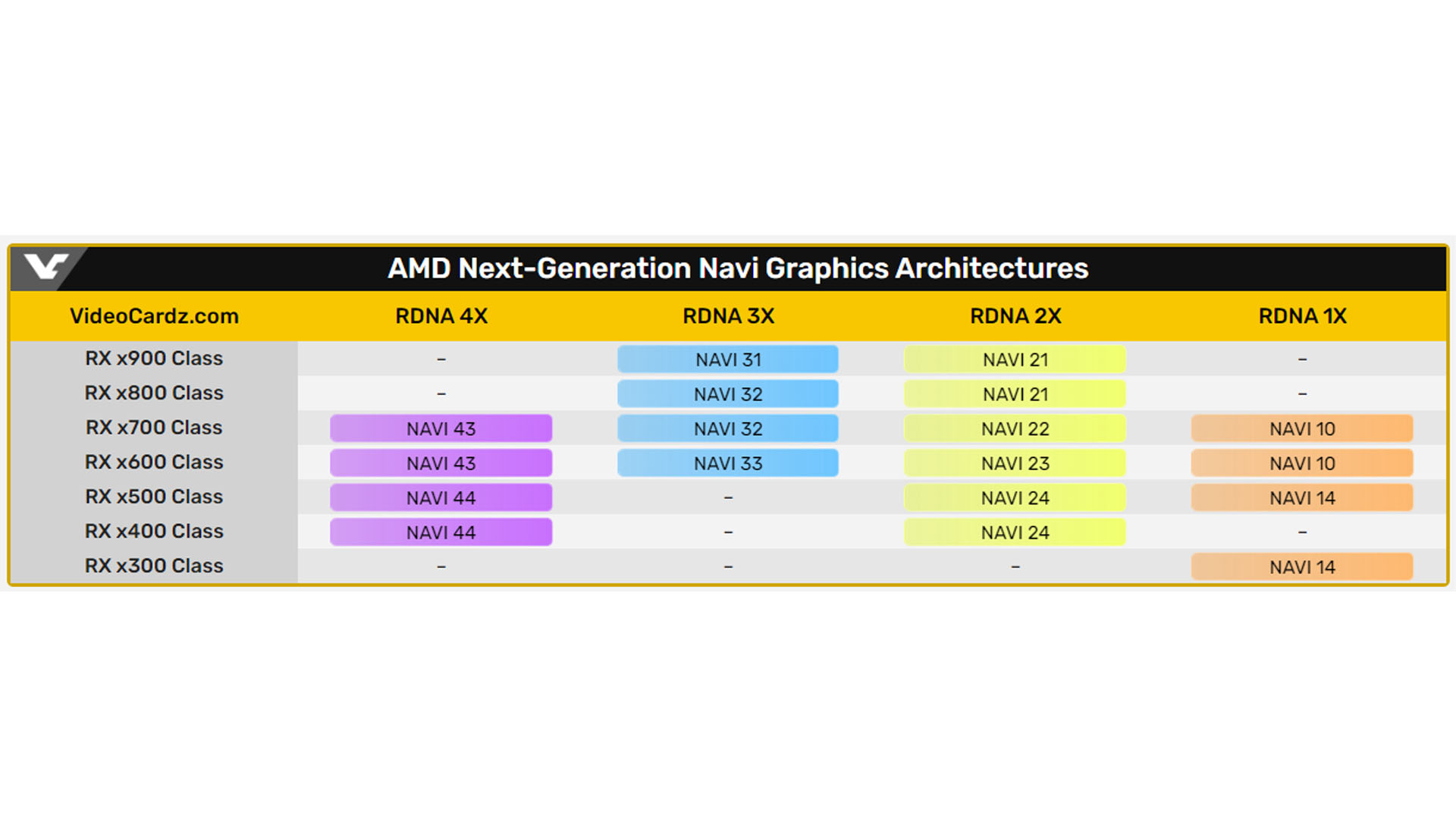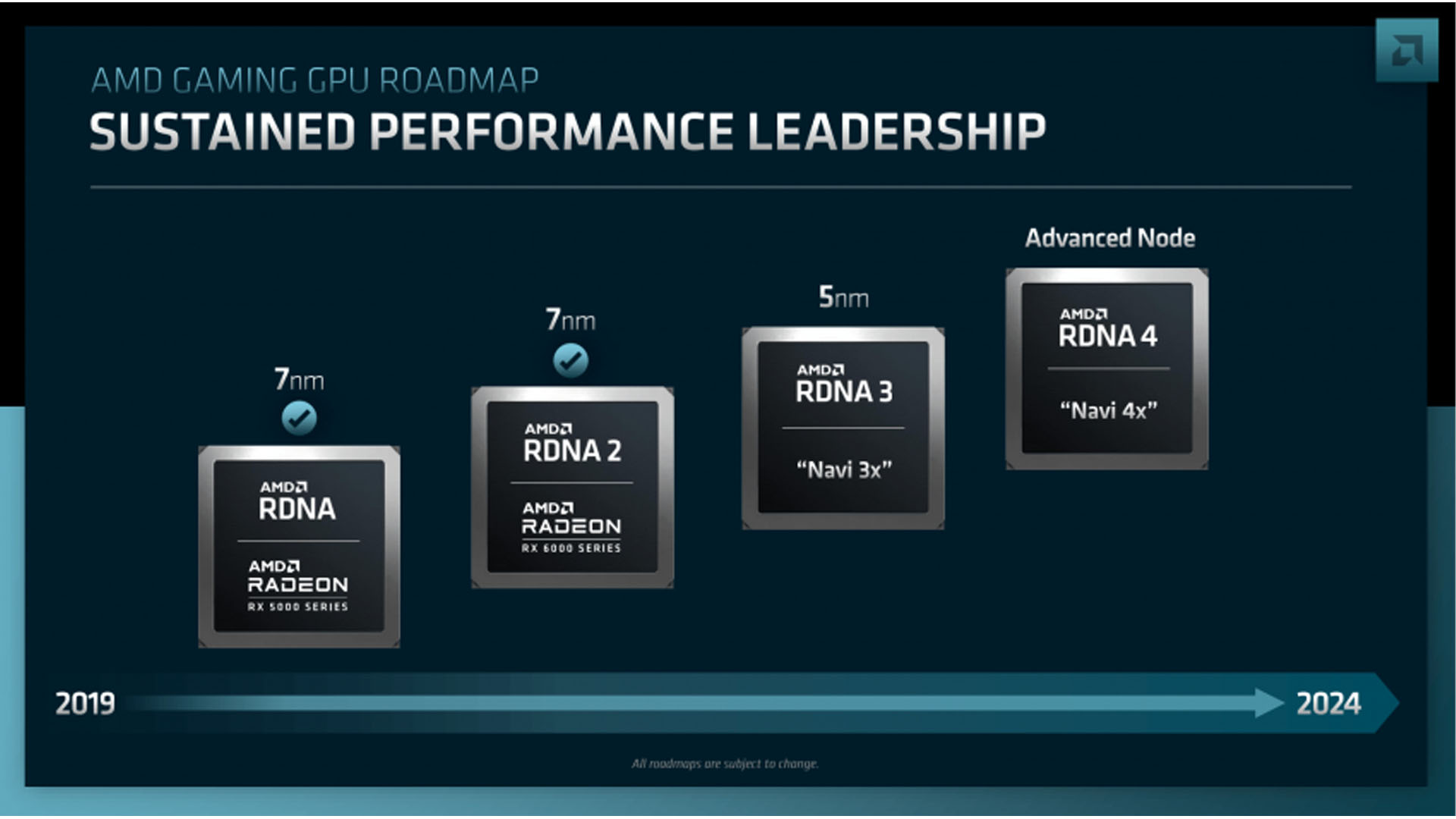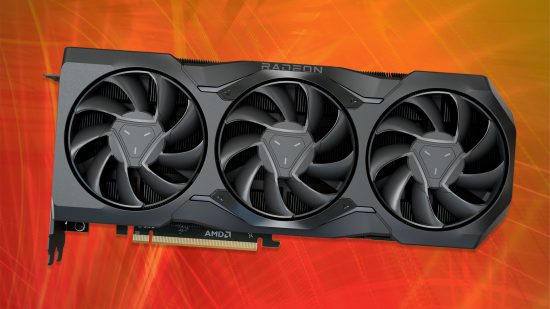It’s being reported that AMD might be returning to its old ways and stepping back from trying to compete at the high-end of graphics card production with its next range of Radeon RX 8000 graphics cards. This would leave Nvidia alone at the top with its RTX 5000 series cards, with AMD instead looking to grab market share in the larger mid-range and low-end segments of the market.
The rumor comes from Twitter/X user @Kepler_L2, who claims that the ‘Navi 4 lineup will not have any high-end GPUs.’ Navi 4 refers to the GPU codenames of any future RDNA 4 architecture, with Navi 31, 32, and 33 being the codenames for the current generation of Radeon graphics cards and similar Navi 41, 42, and 43 GPUs expected for the next generation.

Kepler_L2 goes on to say that we should ‘think of it like RDNA1 or Polaris generation.’ This refers to the fact that AMD had for a number of years chosen to not compete at the high-end of the market, with it only really being the most recent RX 6000 (Navi 2x) and RX 7000 (Navi 3x) series that have seen AMD return to the high-end. Given how well the RX 7900 XTX competed with the RTX 4090 for non-ray tracing performance it would be a little surprising to see AMD climb down again so soon.
Some further tweets from regular leakers @All_The_Watts and @uzzi38 go on to say ‘only Navi 43 and Navi 44 survive’ and ‘the way things are going there really will only be one desktop GPU manufacturer left. Just what you all wanted’, respectively. These Tweets tie in with the rumor that AMD was planning a high-end Navi 41 GPU to replace the Navi 31 GPU of the RX 7900 XTX and RX 7900 XT but that it has now scrapped those plans.

The history of RDNA graphics architectures – image source: videocardz.com
However, the only official word we have to go on from AMD is a previous roadmap slide that visually suggests RDNA 4 will continue an upwards performance trend from RNDA 3. Plus, it uses the phrase ‘sustained performance leadership’, which would only really apply if it was looking to outright win some gaming performance scenarios with RDNA 4.

A crucial factor in all this might be the use of chiplet GPU design, where instead of having one huge piece of silicon used for the whole chip, parts of the chip are produced separately and joined together on one package. This production process is far more efficient in terms of chip production costs than using a single large monolithic die for the whole GPU, and it’s what AMD used with its RDNA 3 cards. In contrast, Nvidia stuck with monolithic designs right the way up to the enormous AD102 GPU of the RTX 4090.
However, Nvidia is also rumored to be switching to a chiplet approach for its RTX 5000 cards, so it’s possible AMD has realized that it’s no longer going to have this production efficiency advantage and that Nvidia will be able to sufficiently squeeze AMD on pricing at the high-end that it no longer makes sense to try and compete.
Conversely, it could be the case that AMD has reached a point in its chiplet design and production that it can actually use several lower-tier GPU chiplets on a single card to produce a high-end card without producing a high-end GPU, making the above rumor technically true but the reality for buyers will be that AMD still makes a high-end graphics card. Its current chiplet process only separates off the memory controller and L3 cache from the main GPU, so if a future chiplet process can actually split up the GPU itself, several of these components could be combined into one more powerful chip.
All the above is highly speculative, though, and we’re still a long way off from an expected AMD RX 8000 release date, as we aren’t expecting to see AMD’s new GPU architecture until the end of 2024.
It would certainly be a shame if AMD abandons the high-end of the graphics card market as it would leave Nvidia entirely free to charge what it likes for its highest-end cards. And considering how expensive top-end cards already are, it’s alarming to think how prices might rise further.
What do you make of this news? All too early to say or a worrying sign? Let us know your thoughts on the Custom PC Facebook page, via Twitter, or join our Custom PC and Gaming Setup Facebook group and tap into the knowledge of our 400,000+ members.
In the meantime, you can find our pick of the current top choices of graphics cards – including the RX 7900 XTX as our choice of best card for non-ray-traced games – in our best graphics card guide. Maybe a few more RX 7900 XTX sales will encourage AMD to continue competing at the high-end.
